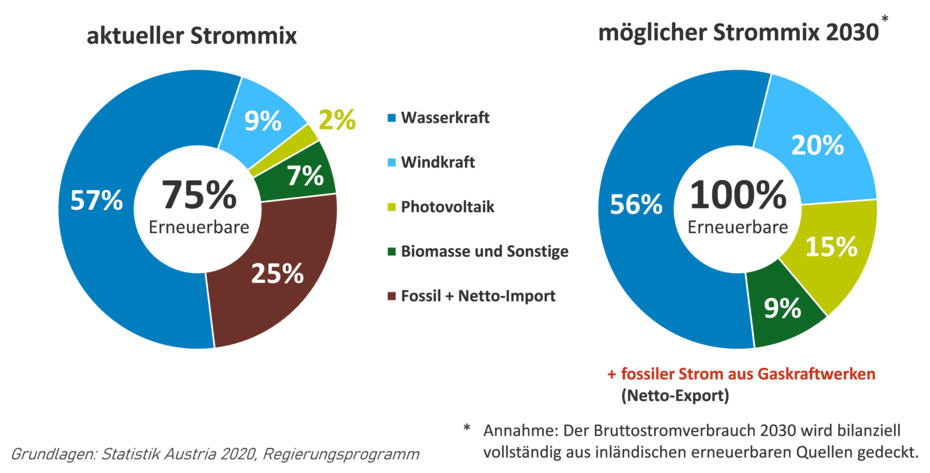
Flexibility In The System
Consumption, storage, generation: The flexible energy system
Countries around the world are converting their energy systems towards renewable energy. Electricity, gas and heat storage systems play a major role in this transformation, particularly due to three parallel developments:
- Applications are becoming increasingly electrified and electricity demand is rising ("sector integration").
- The boundaries between the heat, electricity and gas sectors are becoming blurred ("sector coupling").
- Flexibility in the electricity system is becoming increasingly important (keeping supply and demand in balance).
Electricity from renewable sources plays a major role in this. Austria is already starting the transformation of the energy world with a high proportion of renewables in the electricity sector due to the large amount of hydropower potential that has been tapped in the past. This currently stands at around 75 percent.
Target 2030: cover 100 percent of gross electricity consumption from renewable sources
The federal government has set itself the goal of covering gross electricity consumption entirely from domestic renewable sources in 2030.
According to the government program, an expansion of at least 27 TWh is necessary, which mainly consists of photovoltaics (11 TWh) and wind power (10 TWh). In addition, an additional 5 TWh will come from hydropower and 1 TWh from biomass plants.
Bases: Statistics Austria 2020, government program
Graphic: Austrian Energy Agency

The focus on those areas in which the majority of the potential is still available (photovoltaics and wind power) means that the electricity mix is changing. The share of hydropower remains dominant, while that of wind power and photovoltaics increases from 11 percent to around a third. However, this also means that this electricity is only available when the wind is blowing or the sun is shining.
The electricity system of the future will therefore adapt to the changing electricity mix. The ability to be flexible will be a key factor in ensuring security and quality of supply while reducing greenhouse gas emissions. Flexibility has different dimensions:
- Flexibility in consumption (flexibly switchable loads, demand response, power-to-X, storage)
- Flexibility in generation (gas peakers and CHP, hydropower, X-to-power, storage)
Storage technologies such as pumped storage or batteries can deliver both dimensions: absorbing electrical energy and releasing it again. They will mainly be used for short-term balancing.
This is also possible with power-to-X (to-power) technologies (especially over longer periods of time) via conversion steps. One example of this is the production of hydrogen via electrolysis, the subsequent storage of the hydrogen or the methane obtained from it and finally reconversion into electricity using a fuel cell or gas-fired power plant.
Three further elements enable the effective use of these flexibility options and increase the scope for operating an electricity system:
- Well-developed, robust grids to be able to shift electrical energy geographically
- Digitalization of consumers, generators, storage facilities and grids
- Integrated electricity markets and the use of imports and exports
Pumped storage power plants, power-to-X applications, gas and heat storage systems as well as stationary and mobile battery storage systems will interact in the energy system of the future to ensure security of supply and flexibility.
We provide answers to make the energy system more flexible
On the one hand, our experts have a high level of detailed technical knowledge and, on the other hand, they have a systemic, overall overview of the energy sector. This combination is essential to analyze and plan the complex interaction of many factors in a future flexible system and to make appropriate suggestions.
Contact person

Head of Center Energy Economics & Infrastructure
DI Günter Pauritsch
Email addressguenter.pauritsch@energyagency.at